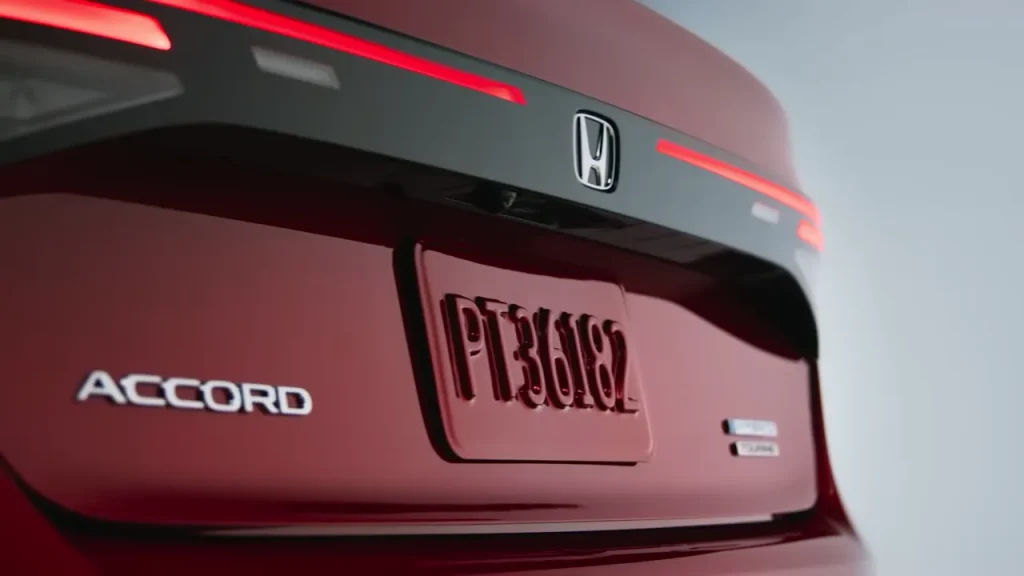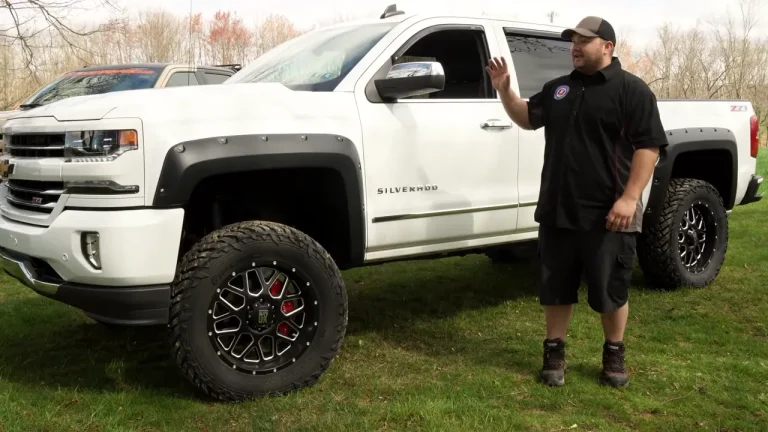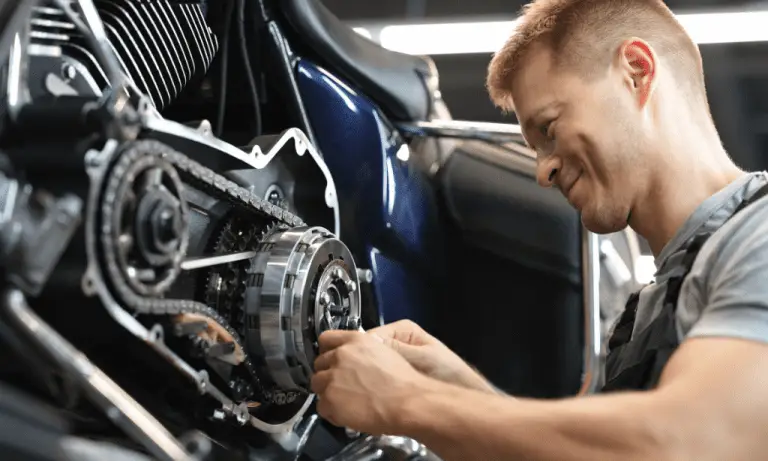What Does VSA Mean On A Honda Accord? (Full Guide)
VSA, or Vehicle Stability Assist, is a system designed to maintain optimal vehicle handling, especially during cornering. The system intervenes when sensors detect instances of understeer or oversteer, helping to prevent skidding or plowing. This is particularly beneficial in situations where various wheels experience different levels of grip, ensuring that the car handles appropriately and stays on course.
How Does VSA Work?
Vehicle Stability Assist (VSA) is a technology designed to enhance vehicle stability and prevent skidding or loss of control during challenging driving conditions. The system utilizes various sensors, including those for wheel speed, steering input, and lateral acceleration, to continuously monitor the vehicle’s dynamics. When the sensors detect potential instability, such as understeer (front-wheel skidding) or oversteer (rear-wheel skidding), VSA intervenes to assist the driver in maintaining control.
VSA primarily operates by selectively applying braking to individual wheels and, in some cases, adjusting engine power. For example, if the system senses understeer during a turn, it may apply braking force to the inside rear wheel, creating a yawing effect that helps steer the vehicle back on course. In the case of oversteer, the system may apply brakes to the outer front wheel to counteract the skid.
Moreover, VSA works in conjunction with the anti-lock braking system (ABS) and traction control system to provide comprehensive stability control. By dynamically adjusting braking forces and engine power, VSA helps mitigate the effects of unfavorable driving conditions, promoting safer and more controlled handling for the driver.
How Do You Turn Off the VSA on a Honda Accord?
In most Honda Accord models equipped with Vehicle Stability Assist (VSA), you can turn off the VSA by using a button located on the dashboard. The VSA Off button is typically positioned near the driver’s left knee, on the lower part of the dashboard.
To turn off the VSA, the vehicle should be stationary or moving at a very low speed. Press the VSA Off button, and you should see an indicator light on the instrument panel confirming that the VSA system is deactivated.
It’s important to note that turning off the VSA may affect the vehicle’s stability control, and it is generally recommended to keep the system activated for normal driving conditions. Disabling the VSA may be useful in specific situations, such as when driving in deep snow or sand, where a certain degree of wheel slippage may be necessary.
However, for everyday driving, it’s advisable to leave the VSA activated to ensure optimal stability and safety. Always refer to your vehicle’s owner’s manual for specific instructions and guidelines on using the VSA Off button in your Honda Accord model.
What Do the VSA Codes Mean?
VSA codes refer to diagnostic trouble codes (DTCs) associated with the Vehicle Stability Assist system in a vehicle. When the VSA system detects a potential issue, it stores a specific code to help identify the problem. These codes are typically alphanumeric and can signify various problems within the VSA system, such as sensor malfunctions, communication errors, or issues with individual components.
When retrieving VSA codes, a diagnostic tool is often connected to the vehicle’s onboard diagnostics (OBD-II) port to read and interpret the codes. Once identified, the codes can provide valuable information for technicians to diagnose and address the root cause of the VSA-related issue.
Common VSA codes include C1xx series codes for controller area network (CAN) communication errors, U1xxx codes for network communication issues, and specific codes for sensor malfunctions or faults within the VSA module.
If you encounter a VSA warning light on your dashboard, it’s advisable to have the codes read by a qualified mechanic or at an auto service center to determine the specific nature of the problem and proceed with the necessary repairs. Always consult the vehicle’s service manual or seek professional assistance for accurate interpretation of VSA codes and appropriate troubleshooting steps.

Can I Drive With the VSA Light On?
Driving with the Vehicle Stability Assist (VSA) light on is generally safe, but it’s essential to address the underlying issue that triggered the warning light. When the VSA light illuminates on the dashboard, it indicates a potential problem with the system, which might compromise the vehicle’s stability control and traction assistance features.
While the vehicle remains operational with the VSA light on, it’s crucial to understand that the stability and traction control functions may not work correctly. This could impact the vehicle’s handling in certain driving conditions, especially during slippery or challenging road situations.
It’s recommended to have the vehicle inspected by a qualified mechanic as soon as possible after the VSA light comes on. The mechanic can use diagnostic tools to identify the specific issue triggering the warning light and perform the necessary repairs to ensure the VSA system functions properly. Prompt attention to the warning light helps maintain optimal vehicle safety and stability control, reducing the risk of potential driving hazards.
Is it safe to drive with VSA light on?
Driving with the Vehicle Stability Assist (VSA) light on is generally safe, but it’s important to recognize that the VSA system, which aids in maintaining vehicle stability and traction control, may be compromised. The illuminated VSA light indicates a potential issue with the system, such as a malfunctioning sensor, and its associated stability and traction control functions may not operate as intended.
While you can continue driving with the VSA light on, especially in normal driving conditions, it’s advisable to exercise caution, particularly in situations where enhanced stability and traction control are crucial, such as during inclement weather or challenging road conditions.
It’s recommended to have the vehicle inspected by a qualified mechanic as soon as possible to identify and address the underlying problem triggering the VSA light. Prompt attention to the issue ensures that the safety features associated with the VSA system are functioning optimally, providing reliable stability control during various driving scenarios.

How Can You Fix the Problem With VSA?
Fixing a problem with the Vehicle Stability Assist (VSA) system involves identifying and addressing the specific issue that triggered the warning light. Here are some general steps that can be taken:
- Diagnostic Scan: Use a diagnostic scan tool to retrieve the VSA codes stored in the vehicle’s onboard computer. These codes provide information about the nature of the problem.
- Inspect Sensors: Check the sensors associated with the VSA system, including wheel speed sensors and yaw rate sensors. Malfunctioning sensors can often be a common cause of VSA issues.
- Check Wiring and Connections: Inspect the wiring and connections related to the VSA system. Loose or damaged wiring can interfere with sensor signals and cause system malfunctions.
- Brake System Inspection: Since the VSA system is closely tied to the vehicle’s braking system, inspect the brake components, including brake fluid levels, for any issues.
- Resetting the System: In some cases, simply resetting the VSA system may resolve minor issues. This can be done by turning off the vehicle, removing the key, and then restarting.
- Professional Inspection: If the problem persists or is beyond basic checks, it’s advisable to seek the expertise of a qualified mechanic or a dealership service center. They have the tools and knowledge to perform in-depth diagnostics and address complex VSA issues.
- Component Replacement: Depending on the diagnosis, components such as sensors, the VSA module, or related parts may need replacement to restore the proper functioning of the system.
What Are the Other Warning Lights on the Dashboard?
Modern vehicles are equipped with a variety of warning lights on the dashboard to alert drivers to potential issues or system malfunctions. Some common warning lights include the Check Engine Light, which indicates a problem with the engine or emissions system; the ABS (Anti-lock Braking System) light, signaling an issue with the braking system; the Airbag Light, indicating a problem with the airbag system; and the Battery Light, alerting to issues with the charging system.
There may be lights for low engine oil, low fuel, tire pressure, and various vehicle stability and traction control systems. Each warning light serves as an important indicator, and when illuminated, it’s crucial to address the underlying problem promptly.
Consulting the vehicle’s owner’s manual can provide detailed information about specific warning lights and their meanings. If uncertain about the cause of a warning light, seeking professional assistance from a qualified mechanic or an authorized service center is advisable for accurate diagnosis and resolution.

Should I Keep VSA On or Off?
Whether to keep Vehicle Stability Assist (VSA) on or off depends on driving conditions and personal preferences. In normal driving situations, it is generally recommended to keep the VSA system activated. VSA enhances vehicle stability and traction control, particularly during cornering or challenging road conditions. It helps prevent skidding, loss of control, and improves overall safety.
However, there are situations where temporarily turning off VSA may be beneficial. For example, when driving in deep snow, mud, or sand, a certain amount of wheel slippage may be necessary for optimal traction. In such cases, some drivers prefer to disable VSA to allow more wheel spin.
Most vehicles equipped with VSA have a dedicated button on the dashboard that allows drivers to turn the system on or off. It’s essential to consult the vehicle’s owner’s manual to understand the specific recommendations and guidelines for using the VSA system based on the vehicle model.
While keeping VSA on is recommended for regular driving conditions, drivers may choose to turn it off temporarily in specific situations where enhanced wheel slip is necessary. Always exercise caution and consider the road conditions when deciding whether to activate or deactivate the VSA system.
Is Traction Control the Same as VSA?
Traction control and Vehicle Stability Assist (VSA) are related but distinct automotive safety features. Traction control is a system designed to prevent wheel spin during acceleration by modulating engine power or applying brakes to individual wheels. Its primary function is to optimize traction, particularly in slippery conditions such as rain or snow, and enhance vehicle stability during acceleration.
On the other hand, VSA is a more comprehensive system that incorporates traction control but extends its functionality to include stability enhancement during cornering and sudden maneuvers. VSA uses sensors to monitor various vehicle parameters, such as wheel speed, steering input, and lateral acceleration.
When it detects conditions that may lead to oversteer (rear-wheel skidding) or understeer (front-wheel skidding), VSA intervenes by selectively applying brakes to specific wheels and, in some cases, adjusting engine power to help the driver regain control.
While traction control focuses on optimizing acceleration traction, VSA provides a broader range of stability control functions, making it more effective in preventing skidding and loss of control during various driving scenarios. In many vehicles, these systems work together to enhance overall safety and stability on the road.

Which Models of Honda Have VSA?
Most Honda models come equipped with Vehicle Stability Assist (VSA) as a standard feature. Honda has incorporated VSA into many of its vehicles to enhance safety and stability during driving. This includes a wide range of models, such as sedans, SUVs, and crossovers.
Some of the popular Honda models that typically feature VSA include:
- Honda Accord
- Honda Civic
- Honda CR-V
- Honda Pilot
- Honda Odyssey
- Honda Fit
- Honda HR-V
- Honda Ridgeline
It’s important to note that features and specifications can vary by model year and trim level, so it’s recommended to check the specific details of the vehicle you are interested in or consult the latest information provided by Honda for the most accurate and up-to-date details on VSA availability. You can refer to the official Honda website, vehicle manuals, or contact a Honda dealership for the latest information on the inclusion of VSA in specific models.
What Is the Difference Between VSA and ABS?
Vehicle Stability Assist (VSA) and Anti-lock Braking System (ABS) are both advanced safety features in vehicles, but they serve different purposes and operate in distinct ways.
VSA (Vehicle Stability Assist):
- Purpose: VSA is designed to enhance overall vehicle stability and control during dynamic driving conditions, such as cornering, sudden maneuvers, or slippery road surfaces.
- Operation: VSA uses various sensors, including wheel speed sensors, steering input sensors, and lateral acceleration sensors, to monitor the vehicle’s dynamics. If it detects conditions that may lead to oversteer or understeer, the system intervenes by selectively applying brakes to specific wheels and, in some cases, adjusting engine power to help the driver regain control.
- Benefit: VSA helps prevent skidding and loss of control, contributing to safer handling in challenging driving scenarios.
ABS (Anti-lock Braking System):
- Purpose: ABS is specifically focused on optimizing braking performance and preventing wheel lockup during hard or emergency braking.
- Operation: ABS uses wheel speed sensors to detect when a wheel is on the verge of locking up. When this occurs, the system modulates brake pressure to that wheel rapidly, allowing it to rotate and maintain traction. This prevents skidding and enables the driver to maintain steering control during braking.
- Benefit: ABS enhances vehicle safety by preventing wheel lockup and maintaining steering control, especially in situations where hard braking is required.
While VSA is primarily concerned with overall vehicle stability and control, especially during dynamic driving conditions, ABS is focused on optimizing braking performance and preventing wheel lockup during braking maneuvers.
Both systems contribute to safer driving by providing enhanced control and stability, particularly in adverse or emergency situations. Many modern vehicles are equipped with both VSA and ABS as standard safety features.
FAQ:
What does VSA stand for on a Honda Accord?
VSA stands for Vehicle Stability Assist, a safety feature designed to enhance stability and control during various driving conditions.
How does VSA work on a Honda Accord?
VSA uses sensors to monitor the vehicle’s dynamics, intervening when it detects conditions that may lead to oversteer or understeer. It selectively applies brakes to specific wheels and adjusts engine power to help the driver regain control.
Is VSA standard on all Honda Accord models?
In recent years, VSA has been a standard feature on many Honda Accord models, providing enhanced safety and stability.
Can I turn off VSA on my Honda Accord?
Yes, many Honda Accord models have a VSA Off button that allows drivers to temporarily disable the system. However, it’s generally recommended to keep VSA on for regular driving conditions.
When should I turn off VSA on my Honda Accord?
VSA can be turned off in specific situations, such as when driving in deep snow or sand, where a certain amount of wheel slippage may be necessary for traction.
Does VSA replace ABS on a Honda Accord?
No, VSA and ABS are separate systems. ABS (Anti-lock Braking System) focuses on optimizing braking performance, while VSA enhances overall vehicle stability and control.
Can VSA prevent skidding in slippery conditions?
Yes, VSA is designed to intervene and prevent skidding during slippery conditions by selectively applying brakes and adjusting engine power.
Will VSA improve my Honda Accord’s handling?
Yes, VSA is intended to enhance handling by preventing oversteer and understeer, contributing to safer and more controlled driving.
Does VSA require special maintenance on my Honda Accord?
VSA is typically maintenance-free. However, if the system malfunctions, it’s advisable to have it inspected by a qualified mechanic.
Can VSA help in emergency situations on my Honda Accord?
Yes, VSA can contribute to improved vehicle control in emergency situations by preventing skidding and enhancing stability, providing an additional layer of safety.
- Why Are My Car Headlights Not Bright Enough? - May 9, 2024
- How Long Can You Drive With An EVAP Leak? - May 9, 2024
- What Does B Stand for in a Car? [Full Guide] - May 9, 2024



